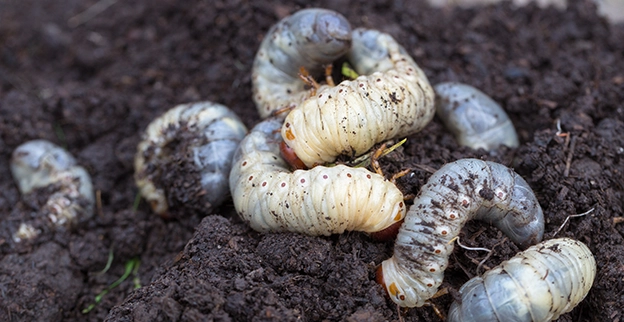Grubs are the larvae of beetles. They love to eat the roots of your grass, causing unsightly damage. Our Grub Control Application prevents grub damage and includes a special guarantee and warranty.
Please note that your application schedule is subject to change. Our experience and expertise with Indiana seasons, weather, and conditions enable us to determine the best timing for each application.



